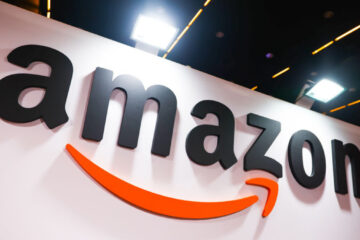Julien Eichinger – stock.adobe.c
France’s Societe Generale (SocGen) bank is merging two of its French retail brands to cut costs and enable it to focus on a single IT system.
At the same time, the bank will invest in its digital banking offering, Boursorama, which aims to have over four million customers by 2025.
The move to merge SocGen’s retail business with its Credit du Nord subsidiary will see it close 600 of its 2,100 branches as part of a plan to take €450m off its costs by 2025.
It said the decision followed the results of a study that began in September.
The bank said the combined operation would “offer the best combination of human expertise and digital prowess”.
SocGen will run both brands on a single IT system after the merger. “IT investments focused on a single system, and no longer on two systems, will result in stronger digital capabilities to allow our customers to enjoy the simplest, most efficient and fastest solutions to their banking needs.”
The bank added that it would also offer customers more personalisation through digital services, with staff focused on giving advice. “In-branch employees will be able to focus primarily on expert assessment and advisory services, to the benefit of customers, thus increasingly turning day-to-day banking into a digital, remote activity,” it said.
SocGen CEO Frédéric Oudéa said the Covid-19 pandemic had accelerated changes in the retail banking sector.
The bank will invest more in its Boursorama digital bank offering with the aim of making it “one of the leading banks in France”, according to Oudéa.
SocGen said the digital banking operation had built a customer base of two million in five years and intended to continue its investments aimed at building its customer base over the next few years. It has set itself the goal of reaching more 4.5 million customers by 2025.
Banks across Europe are taking drastic measures amid the twin pressures of the Covid-19 pandemic and increasing competition from more agile and tech-savvy challengers.
Challenger banks have the advantage of a low cost base as a result of their automation of digital services. Traditional banks are balancing existing models, which have been used to serve customers for years, with new digital banking services. This is seeing cuts in costs through branch closures, job cuts and even the closure of offices, while investment in technology increases.
The Covid-19 pandemic, which forced people to stay at home, has spurred the use of digital banking among consumers.
For example, last week Allied Irish Bank (AIB) said it was cutting its workforce by 1,500, merging branches and vacating premises as it attempts to cut costs following a review, influenced by the acceleration of digital banking and home working during the Covid-19 pandemic.
Challenger banks that were built to offer customers services on the go through mobile phones have seen increased use of their services during the pandemic.
Despite the economic uncertainty caused by the Covid-19 health crisis and fast-approaching Brexit, app-based Starling Bank became profitable earlier than expected as a result of increased customer take-up.
“We have been planning for this most of the year and we knew we were going to do it by the end of the year,” said Starling CEO Anne Boden. “There was a bit of a hiccup when the coronavirus hit, when for a few months we didn’t know how it was going to impact us.”
Starling’s £800,000 operating profit for October, which may appear insignificant in a sector where profits are counted in billions, is a major milestone for a new bank.
We look at how AI and data science are supporting the global push to deal with the coronavirus pandemic. We reveal, and talk to, the man behind the world’s first computer virus pandemic, the Love Bug. And we examine how the IT services market will change as a result of the current crisis. Read this CW E-Zine issue now.
CIO dashboards can be a vital tool for assessing metrics in real time to gain insight on IT performance and support better …
The business response to COVID-19 has accelerated technology adoption, making emerging technologies a more accessible and …
The Open Group is teaming up with a United Nations agency on best practices, guides and standards to show resource-strapped …
Companies looking to introduce security testing earlier into software development must look past myths and understand what to …
The lack of consistent updates (and the open source nature of the stacks) make the Amnesia:33 vulnerabilities difficult to fix as…
In his GitHub post, researcher Oskars Vegeris discussed Microsoft classifying the vulnerability as “Important” rather than “…
Network performance is a top issue among IT teams and remote workers amid the pandemic and can correlate with other technical …
The Apstra acquisition could help Juniper sell networking hardware and software to heterogeneous data centers and large-scale …
Network teams can avoid signal coverage issues by performing different wireless site surveys as they evaluate new spaces, set up …
Colocation facility costs can include anything from power fees and bandwidth service charges to connectivity expenses, change …
In any multi-tenant IT environment, noisy neighbors can be an issue. Here’s a closer look at how the challenges differ in the …
Use this data center selection checklist to make fair and comprehensive comparisons between colocation data center providers …
Raj Verma, CEO of SingleStore, explains why the vendor rebranded from MemSQL and how its platform is more than just an in-memory …
Collibra CEO discusses the importance of data governance for enterprises and how to tie data governance to business terminology …
The enterprise edition of the MySQL database is being enhanced on Oracle Cloud Infrastructure to enable users to run analytics …
All Rights Reserved, Copyright 2000 – 2020, TechTarget
Privacy Policy
Cookie Preferences
Do Not Sell My Personal Info


